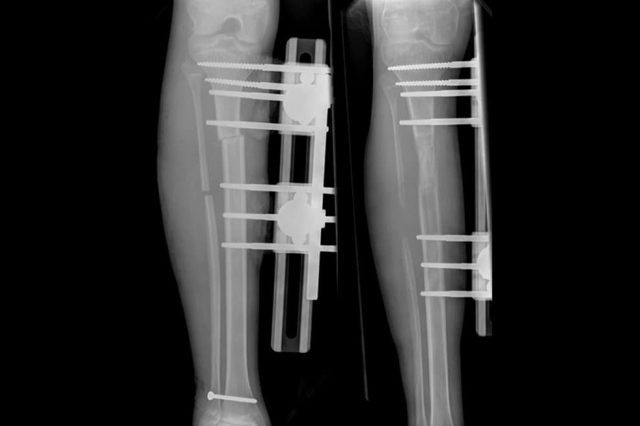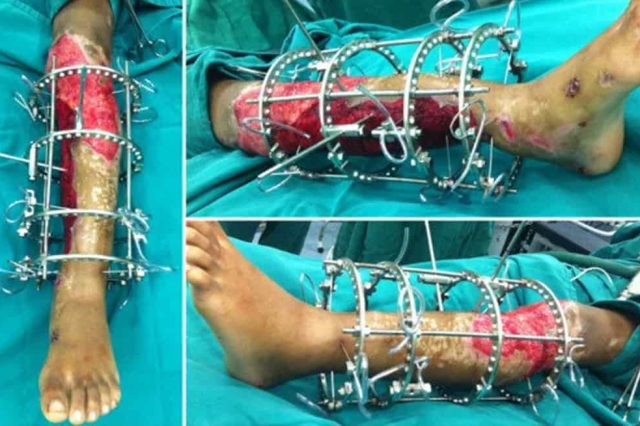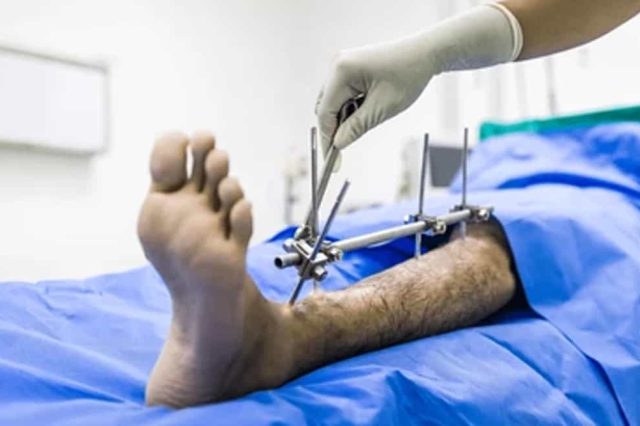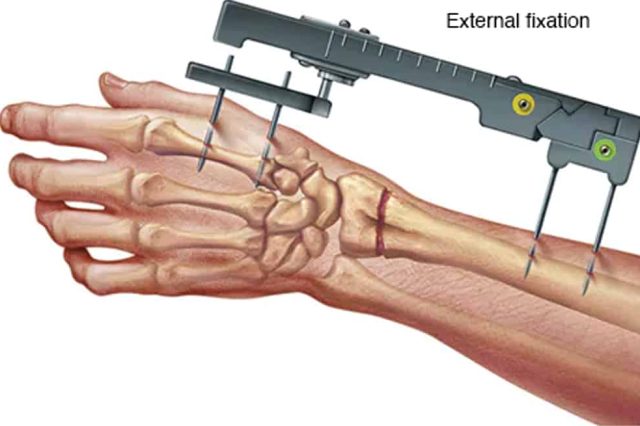External fixators are orthopedic devices used to stabilize, immobilize, move fractures or bone segments, providing support for proper bone healing. They are often employed in situations where traditional methods, such as casting or internal fixation (using plates and screws), may not be suitable or effective. Generally used for treatment of open fractures and orthopedic deformities. They are also used for treatment of pseudarthrosis of long bones. Here are some common reasons why external fixators are used:
- Open Fracture Treatment Procedures: In cases of open fractures where the bone has broken through the skin, external fixators can provide stability without the need for internal hardware that might increase the risk of infection.
- Complex Fracture Treatment Procedures: External fixators are useful for stabilizing complex fractures, including those with multiple fragments or fractures near joints where precise alignment is crucial.
- To Prevent Soft Tissue Damages: When there is significant soft tissue damage or compromised blood supply to the fractured area, external fixators allow for better access to the wound, facilitating wound care and reducing the risk of infection.
- Temporary Stabilization Procedures: External fixators may be used as a temporary measure to stabilize a fracture before internal fixation can be performed.
- Orthopedic Damage Control Procedures: In trauma situations, especially when a patient has multiple life-threatening injuries, external fixators may be applied quickly as part of orthopedic damage control to stabilize fractures and prevent further injury to neurovascular structures and soft tissues.
- Lengthening Procedures: External fixators are also used in limb lengthening procedures where gradual distraction is needed to stimulate new bone growth and increase the length of a bone.
- Correction of Deformities: External fixators can be used to correct deformities in the bone caused by congenital conditions, growth disorders, or previous injuries.
- Joint Contracture Procedures: In some cases, external fixators are used to correct joint contractures, where a joint becomes stiff and loses its functional position.
- Pseudoarthrosis Treatment Procedures: External fixator can be used for treatment of bone pseudoarthroses by using distraction-compression mechanism which increases callus formation and bone healing.
External fixators consist of metal pins or wires that are inserted into the bone on either side of the fracture and connected to an external frame. The frame allows for adjustments to be made to the alignment and length of the bone during the healing process.
The choice of using external fixators depends on the specific characteristics of the fracture, the overall health of the patient, and the surgical team’s judgment regarding the most appropriate method of stabilization and treatment.



